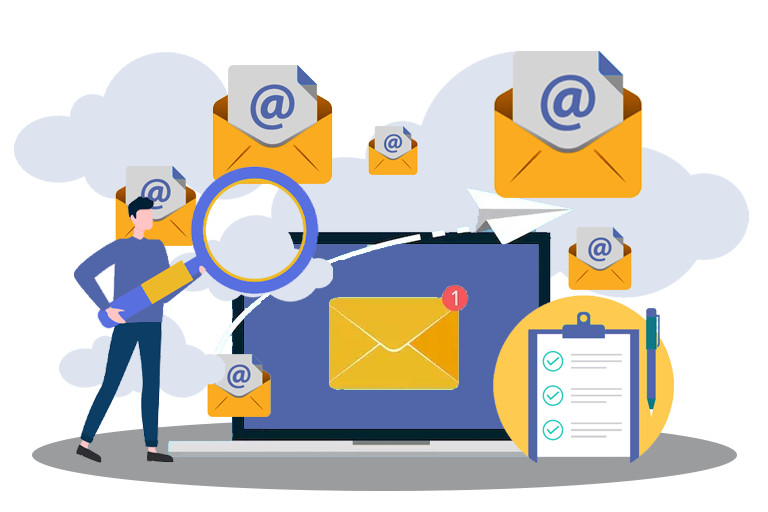
Cold emailing can be a powerful tool for lead generation and business growth if done correctly. Here's an in-depth guide on how to create an effective system for sending cold email campaigns.
1. Understand the Basics of Cold Emailing
Definition: Cold emailing involves reaching out to potential customers or clients who haven't interacted with your brand before.
Goal: To generate leads, establish connections, and eventually convert prospects into customers.
2. Set Clear Objectives
Define what you want to achieve with your cold email campaigns (e.g., lead generation, appointment setting, direct sales).
Establish measurable goals (e.g., response rate, conversion rate).
3. Build a Targeted Email List
Identify Your Target Audience: Define your ideal customer profile (ICP).
Gather Contact Information: Use tools like LinkedIn Sales Navigator, Hunter.io, or Clearbit to find email addresses of your target audience.
Verify Email Addresses: Use email verification tools like NeverBounce or ZeroBounce to ensure accuracy.
4. Set Up a Dedicated Email Domain and IP
Create a New Domain: Use a domain similar to your main business domain but not identical to protect your main domain's reputation.
Set Up Email Hosting: Use reliable email hosting providers like Inboxingprohost, Google Workspace or Microsoft 365.
Warm Up Your Domain: Gradually increase the number of emails sent from your new domain to build a good sender reputation.
If you choose a plan with a dedicated IP included from Inboxingprohost, the warm plan automation is included in the set up of the service
5. Craft Effective Email Content
Subject Line: Make it compelling and relevant. Keep it short and to the point.
Email Body:
Personalization: Address the recipient by name and customize the content to their specific needs or interests.
Value Proposition: Clearly state the benefit or solution you’re offering.
Call to Action (CTA): Include a clear and concise CTA (e.g., schedule a call, visit a website).
Signature: Include your contact information and a professional email signature.
6. Choose the Right Tools and Software
Email Marketing Platform: Use platforms like Inboxingpro Mailshake, Woodpecker, or Lemlist designed for cold emailing.
CRM Integration: Integrate with CRM tools like HubSpot or Salesforce to track interactions and manage leads.
Email Tracking: Use tools to track open rates, click-through rates,
7. Set Up Automation
Sequence Design: Create email sequences with follow-ups. Typically, 3-5 emails spaced a few days apart work well.
A/B Testing: Test different subject lines, email copy, and CTAs to determine what works best.
Personalization at Scale: Use merge tags to personalize emails at scale.
8. Monitor and Optimize Campaigns
Metrics to Track: Open rates, response rates, click-through rates, conversion rates, bounce rates, and unsubscribes.
Analyze Performance: Regularly review these metrics to understand what’s working and what’s not.
Adjust and Improve: Continuously refine your email content, subject lines, and targeting based on performance data.
9. Ensure Compliance with Email Regulations
CAN-SPAM Act: Ensure compliance by including a clear opt-out option and your physical mailing address.
GDPR: If targeting EU residents, ensure you have proper consent and provide a clear privacy policy.
Opt-Out Management: Respect unsubscribe requests promptly and manage your email lists accordingly.
10. Follow Best Practices
Avoid Spam Triggers: Steer clear of spammy language and excessive use of capital letters or exclamation points.
Timing: Send emails at optimal times (usually mid-week mornings).
Email Frequency: Don’t overwhelm recipients with too many emails. Find a balance that keeps you top of mind without being intrusive.
Quick Start Step-by-Step Guide
Define Your Campaign Goals
Determine the primary objective of your campaign.
Set specific, measurable targets.
Build and Verify Your Email List
Identify and gather contact information of your target audience.
Verify the email addresses using an email verification tool.
Set Up a Dedicated Domain and Email Infrastructure
Register a new domain and set up email hosting.
Gradually warm up the domain by sending a few emails per day and slowly increasing the volume.
Craft Your Email Templates
Write compelling subject lines and email bodies.
Personalize each email with the recipient’s name and relevant details.
Choose Your Tools
Select an email marketing platform specialized in cold emailing.
Integrate with your CRM for better lead management.
Design Your Email Sequences
Create a series of emails with follow-ups.
Set up automation rules to manage the sequence.
Launch Your Campaign
Start sending emails according to your designed sequence.
Monitor initial performance closely to catch any issues early.
Monitor and Analyze Results
Track key metrics and analyse performance.
Conduct A/B testing to refine your approach.
Optimize and Iterate
Adjust your email content, targeting, and sequences based on performance data.
Continuously test and refine to improve results.
Ensure Compliance and Best Practices
Regularly review your emails for compliance with regulations.
Follow email marketing best practices to maintain high deliverability and engagement rates.
By following this comprehensive guide, you'll be well on your way to creating a successful cold email campaign system that drives results without compromising on quality or compliance.
Inboxingprohost provide a range of services designed to make cold email marketing a success, you can find details of our inclusive services here
